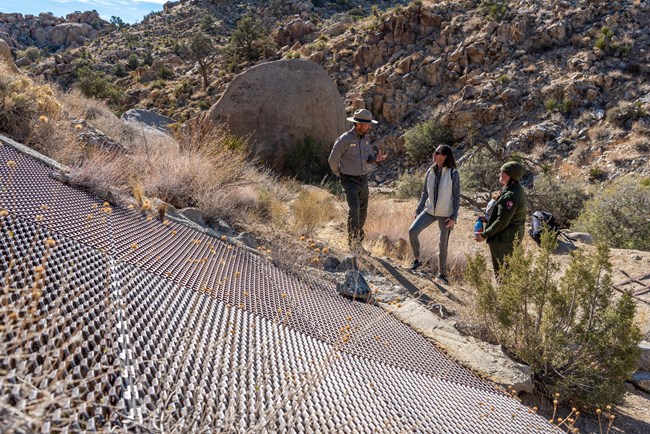Last updated: October 6, 2023
Article
Joshua Tree National Park to Close Abandoned Mines in Restoration Project

NPS Photo
It’s the how-we-do-it part of the mine closure projects in Joshua Tree National Park that stands out from other mine closure projects across the National Park Service.
Joshua Tree National Park was awarded funds in 2022 as part of the Bipartisan Infrastructure Law (BIL) for multiple projects that address visitor safety and ecosystem restoration. Joshua Tree National Park Superintendent David Smith said, “The Park has benefitted from BIL funds by implementing measures to make areas in and around historic mines safe for public visitation.” The initial project will close five abandoned gold mines by the spring of 2023.
Project manager Michael Vamstad, the park’s wildlife ecologist and abandoned minelands project manager, said the park will extract maximum value from the project funds because of the unique skillsets of current park staff. “We have the right equipment and right people to complete the projects. We also contract such things as helicopters and pilots to transport materials to the almost-inaccessible locations of these old, abandoned mines, and we have staff who can weld these mine closures on site,” he said. “The park also schedules the work to avoid wildlife breeding seasons and hot weather as much as possible.” With park staff providing most of the labor, they’re responsible for quality control. “Pride in a job well done means work that will last,” Vamstad said.

NPS Photo
The abandoned mines in Joshua Tree National Park were primarily gold mines, with silver and copper as secondary minerals, and a handful of productive mines that were labor-intensive with little to no gain. “It’s impressive—the amount of work it took to open these mines back in the day,” Vamstad said. “All in the search of gold and riches.”
While there is public interest in abandoned mines, they pose significant risk for injury or possibly death for people seeking the mines. As a result, the mines were closed using various techniques such as bat gates, cupolas, fencing, etc. in order to preserve the safety of both visitors and native wildlife. “These mines are very dangerous which is why we close them.” Vamstad said. “There are some mine openings where the bat gate is about 20 feet inside, so visitors can still get the feel of going into the mine, but with minimal hazards.”
